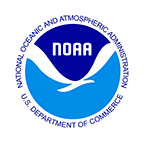Teacher Resources

Connecting with educators is a high priority for the sanctuary. Programs include teacher professional development opportunities, curriculum, and virtual resources on the web. Thunder Bay National Marine Sanctuary supports educational practices such as: science, technology, engineering, art, and math (STEAM); place-based stewardship education (PBSE); and meaningful watershed educational experiences (MWEEs). For more information about some of the sanctuary's partnerships and additional resources for teachers:
The Great Lakes B-WET program funds locally relevant, authentic experiential learning for K-12 students and educators through Meaningful Watershed Educational Experiences (MWEEs).
Northeast Michigan Great Lakes Stewardship Initiative (NEMIGLSI) is a network of education and community partners working to promote quality place-based stewardship education opportunities in Northeast Michigan for the benefit of youth, community, and the environment.
Center for Great Lakes Literacy (CGLL) is a collaborative effort led by Sea Grant educators throughout the Great Lakes watershed. The Center fosters informed and responsible decisions that advance basin-wide stewardship by providing hands-on experiences, educational resources, and networking opportunities that promote Great Lakes literacy among an engaged community of educators, scientists, and citizens.
The National Marine Sanctuaries Webinar Series for educators provides educators with educational and scientific expertise, resources, and training to support ocean and climate literacy in the classroom. This series targets formal and informal educators that are engaging students (elementary through college) in formal classroom settings, as well as members of the community in informal educational venues (e.g., after school programs, science centers, aquariums, etc.).
Office of National Marine Sanctuaries Curriculum

There are many available curriculum resources from the Office of National Marine Sanctuaries. Some that feature shipwrecks and STEM include:
Maritime Archaeology, Discovering and Exploring Shipwrecks: This curriculum introduces students to the world of NOAA and its Maritime Heritage Program. Students learn (1) why shipwrecks are important, (2) the tools used to study shipwrecks, (3) about the complex and costly process of recovering and conserving artifacts, and (4) how NOAA works to protect our maritime heritage.
Mock Shipwreck, Mapping the Past Curriculum: This activity engages students in teamwork as "divers" to create sectioned, scaled drawings of a mock shipwreck. They make connections to maritime history, mathematics, and technology.
Remotely Operated Vehicles Curriculum Guide: This curriculum introduces middle and high school students to ROVs and careers in marine science and underwater archaeology. Students use problem based learning and hands-on STEM activities to solve real world problems, while learning about the engineering design process.
Other Resources

Virtual Dives: Immerse yourself in the ocean and your national marine sanctuaries without getting wet! These virtual reality voyages use 360-degree images to highlight the amazing habitats, animals, and cultural resources you can find in each national marine sanctuary.
Marine Debris Monitoring Toolkit for Educators: This toolkit is designed to assist teachers in educating their students about marine debris and involving them in marine debris research and outreach. Using the toolkit, students conduct marine debris surveys and can enter their data into a national database, analyze monitoring results, and become involved in marine debris stewardship within their communities.
Sinkholes!: Information and lessons about the freshwater sinkholes and what lives in their unique environments in Thunder Bay National Marine Sanctuary.

